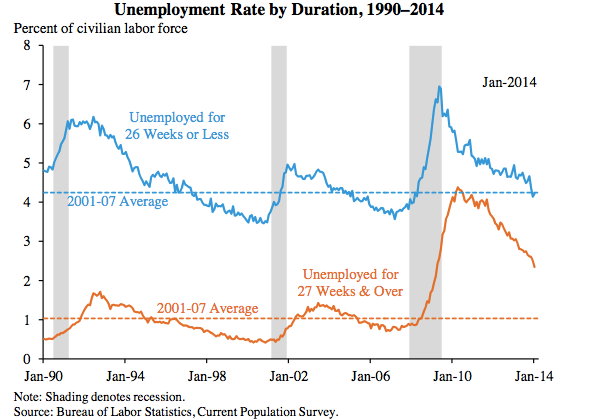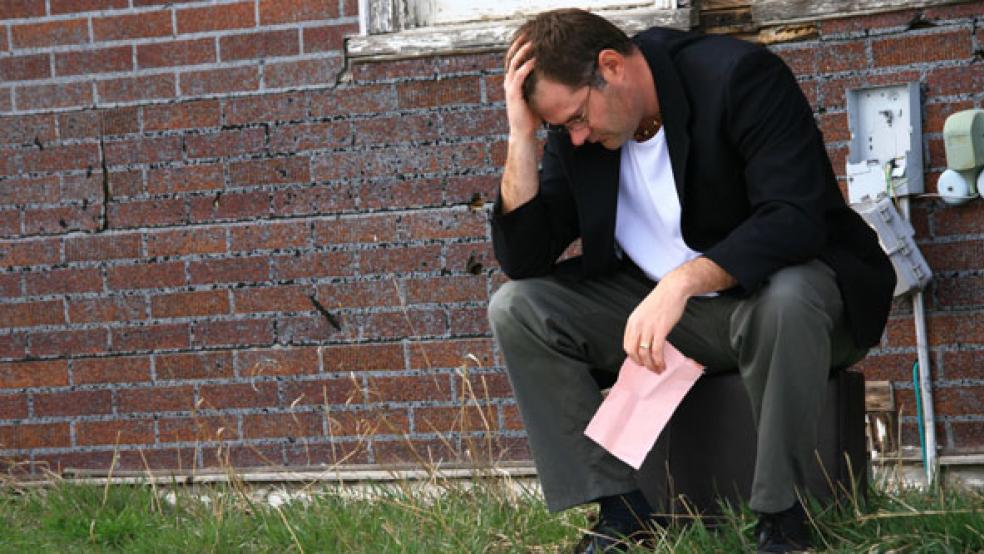Right now, the elevated level of long-term joblessness in the U.S. is all that is preventing the U.S. economy from meeting many economists’ definition of “full employment.”
As Congress battles over whether and how to extend unemployment insurance benefits for the long-term unemployed, the White House recently released the annual Economic Report of the President, which contains the chart reproduced below. What it shows is that the rate of short-term unemployment in the United States has actually dropped below the average rate from the period between 2001 and 2007 – the years immediately prior to the financial crisis and the Great Recession.
Related: Where Unemployment Insurance Benefits Stand in Your State
It also shows that while the rate of long-term unemployment has been dropping steadily for several years, it remains more than twice as high as it was in the same 2001-2007 period. In fact, if long-term unemployment were to fall back to its pre-recession average of just over one percent, the unemployment rate would stand at about 5.5 percent, well within the range many economists consider “full employment.”
(Full employment is generally accepted to be a rate of employment somewhere below 100 percent, to allow for job losses unrelated to economic conditions. Though economists disagree on the specific level, the Organization for Economic Cooperation and Development for example, sets a broad range of between 4.0 and 6.4 percent.)
The persistently high level of long-term joblessness adds a particular urgency to efforts by lawmakers and the administration to push private companies to hire people who have been out of work for an extended period of time – the evidence suggests that’s where the real unemployment crisis remains.

Top reads from The Fiscal Times:




